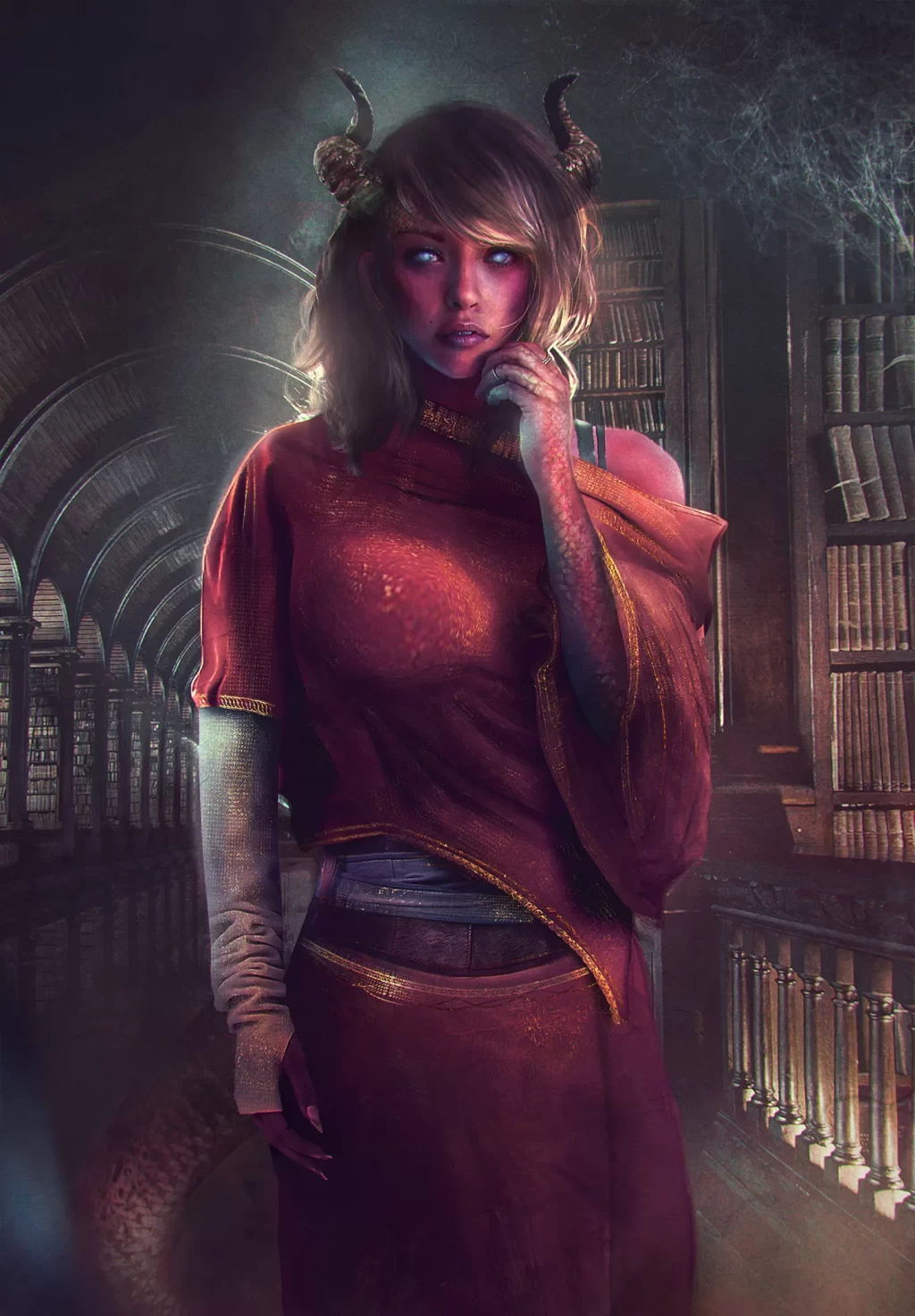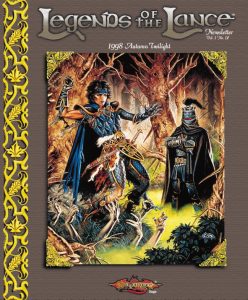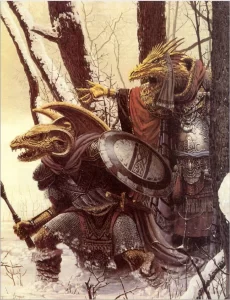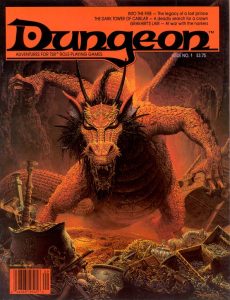
Tieflings, fascinating and enigmatic creatures, are derived from human bloodlines, and in the most expansive interpretation of their lineage, they bear a semblance to humans. However, their infernal heritage has profoundly influenced and left an unmistakable imprint on their physical appearance, making them a unique race with distinct characteristics that set them apart.
Their heads are adorned with large horns that take on a plethora of different shapes, providing a window into their complex nature. Some tieflings possess horns that curl like a ram's, projecting a sense of strength and defiance. Others exhibit straight and tall horns reminiscent of a gazelle's, conveying a sense of grace and elegance. Still, others sport horns that spiral upwards like those of antelopes, hinting at a mysterious and unconventional spirit. These horns are more than mere physical features; they are symbolic representations of the tieflings' unique identities.
Accompanying the horns, tieflings have thick tails, typically measuring four to five feet in length. These tails have a life of their own, lashing or coiling around the legs of their owner when emotions like upset or nervousness arise. The tails add to the mystique of the tieflings, making them an intriguing subject of study and fascination.
Tieflings' mouths are lined with sharply pointed canine teeth, giving their smiles a predatory quality, while their eyes are a study in contrast and uniqueness. Their eyes are solid, bold colors such as black, red, white, silver, or gold, devoid of any visible sclera or pupil. This feature adds a supernatural allure to their visage and separates them from the mundane.
Their skin tones encompass the entire spectrum of human coloration, but with an added dimension. Various shades of red intermingle with the standard hues, reflecting their infernal background. Their hair, a cascading waterfall flowing from behind their horns, is usually dark, ranging from black or brown to deep shades of red, blue, or purple. This riot of colors adds to their aesthetic appeal and emphasizes their otherworldly origin.
In terms of social structure, tieflings are often found in small minorities within human cities or towns. Their habitat is typically confined to the roughest quarters of these places, where they frequently grow up adopting roles as swindlers, thieves, or crime lords. Sometimes, they choose to live among other minority populations in enclaves, where they find more respect and acceptance.
Lacking a homeland and a typical communal structure, tieflings have developed a strong survival instinct. They are acutely aware that they must carve out their path in the world and be resilient and robust to survive. Trust does not come easily to them, especially from those who claim friendship. But when the trust is genuinely demonstrated by a tiefling's companions, it's reciprocated, and a tiefling learns to extend the same trust to them. Loyalty, once given, becomes an unbreakable bond, turning a tiefling into a lifelong friend or ally.
Society's perception of tieflings is often clouded by suspicion and fear. The infernal heritage, so visible in their appearance, leads people to assume it must have affected their personality and morality. Shopkeepers vigilantly guard their goods, the town watch suspiciously observes their movements, and political demagogues utilize them as scapegoats for inexplicable occurrences. However, these prejudices are often misguided. A tiefling's bloodline generally has minimal impact on personality or ethical disposition. Years of facing such mistrust inevitably shape a tiefling's character, leading them to either embrace the wicked stereotype or strive for virtue. Most are simply acutely aware of societal reactions and develop the skill to overcome prejudices through charm or intimidation.
The fear and caution surrounding tieflings exceed even that reserved for half-orcs. Their heritage's evil is plain to see, leading many to consider a tiefling as a devil incarnate from the Nine Hells. Superstition prevails as people make warding signs, cross streets to evade proximity, or even bar doors against them.
Tieflings are a complex and intriguing race, embodying both human similarities and infernal distinctions. Their physical characteristics and societal experiences weave a rich tapestry that inspires curiosity, empathy, and sometimes fear. Their existence adds a layer of depth and complexity to the world, opening new avenues for understanding the intricate relationship between heritage, appearance, and societal acceptance.






